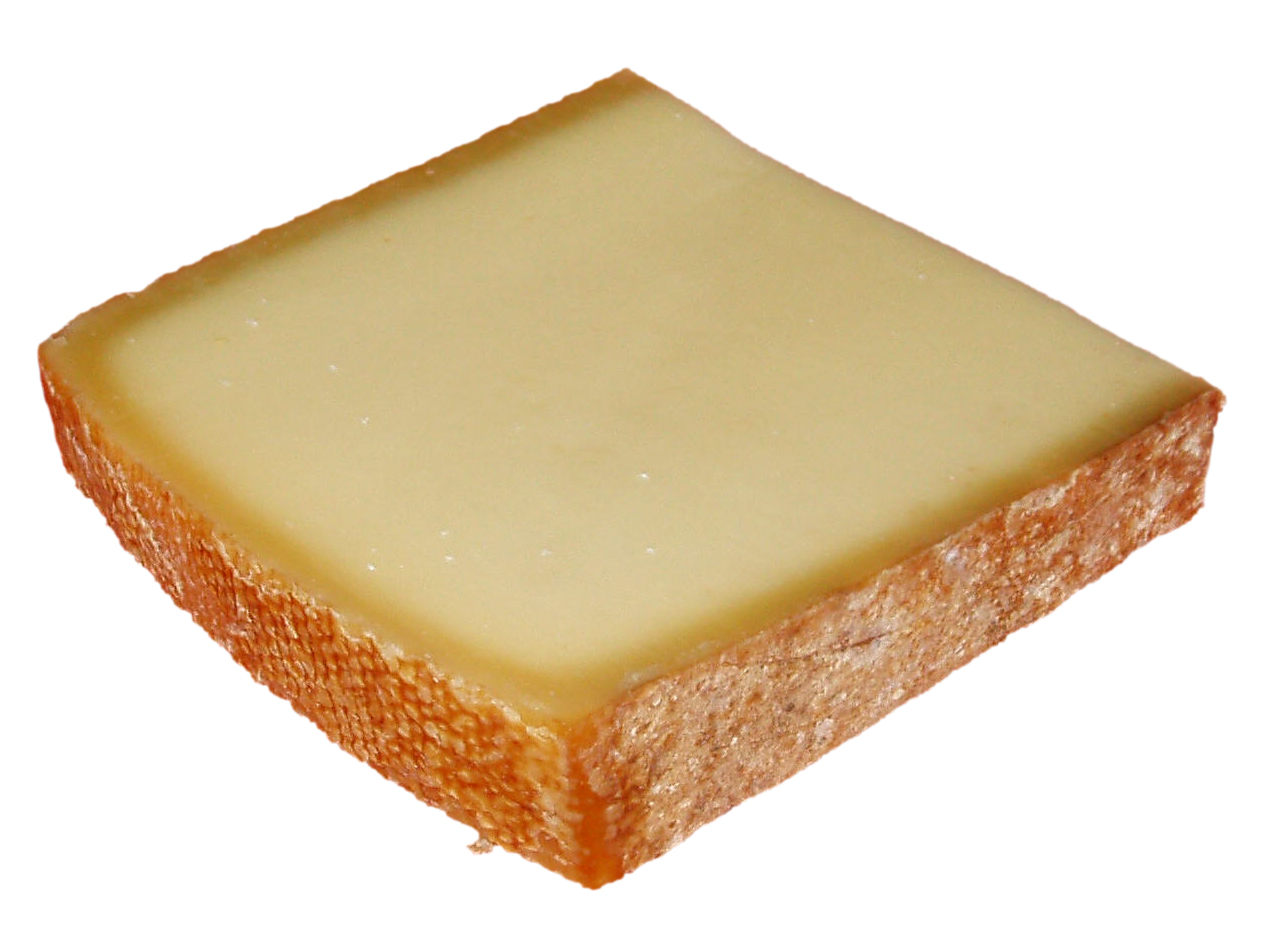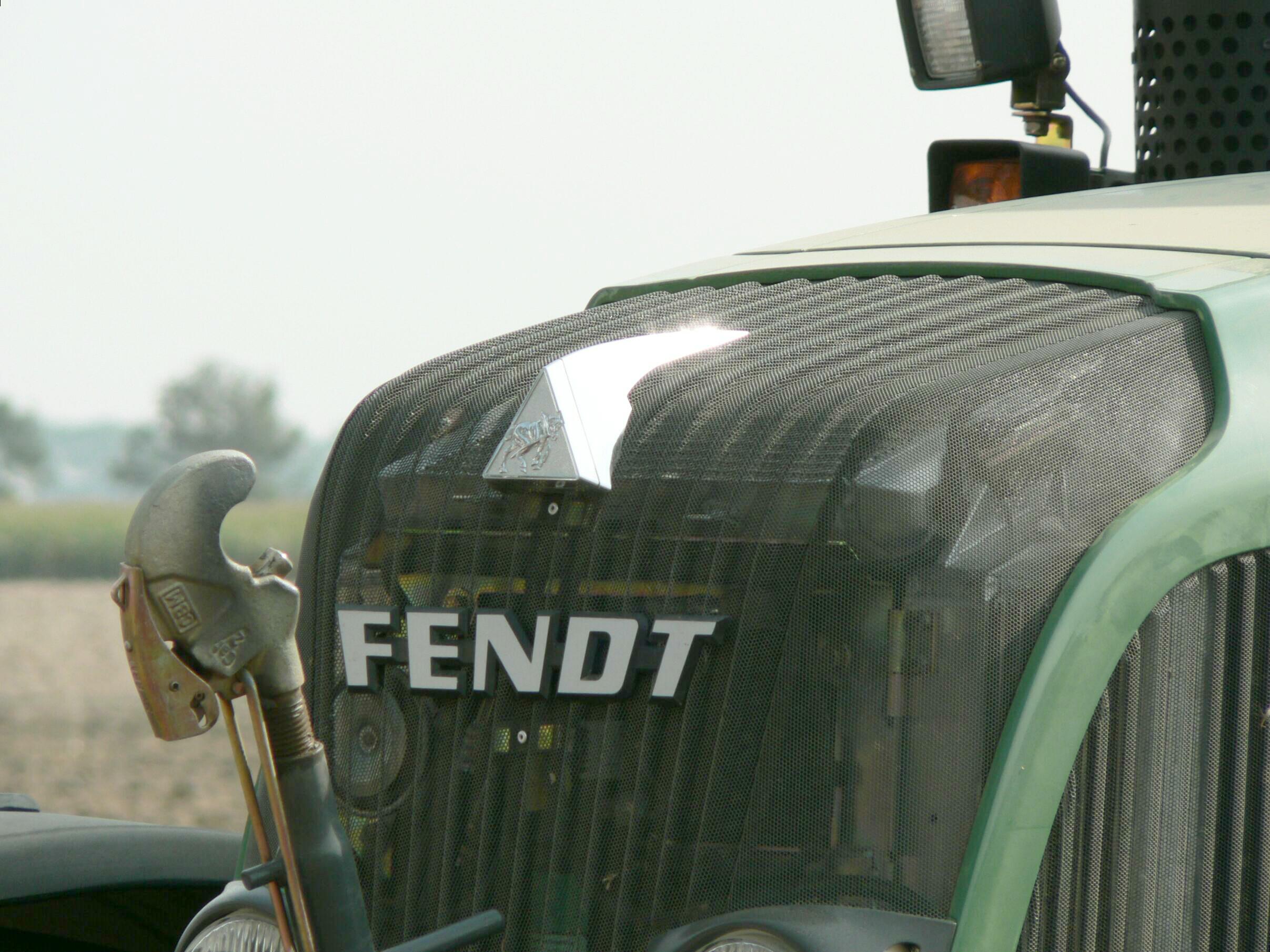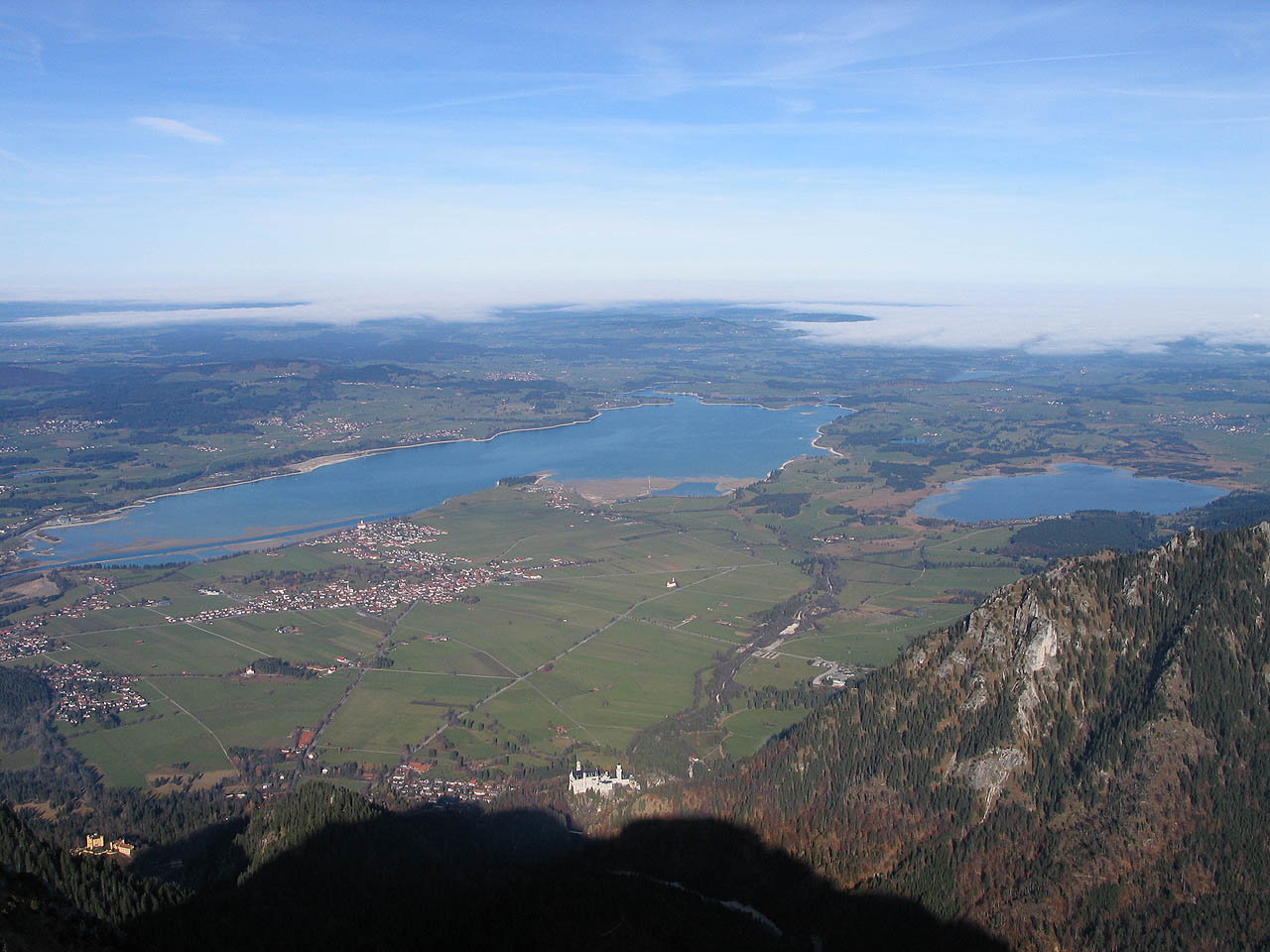|
Allgäu
The Allgäu (Standard German: , also Allgovia) is a region in Swabia in southern Germany. It covers the south of Bavarian Swabia, southeastern Baden-Württemberg, and parts of Austria. The region stretches from the pre-alpine lands up to the Alps. The main rivers flowing through the Allgäu are the Lech and Iller. Allgäu is not an administrative unit. The alpine regions of the Allgäu rise over 2,000 metres in elevation and are popular for winter skiing. The Allgovian area is notable for its beautiful landscapes and is popular for vacations and therapeutic stays.Its scenic countryside can be seen in Asmus, C. and Bufe, S. "Dampflokomotiven im Allgau" (1977, Hermann Merker). It is well known in Germany for its farm produce, especially dairy products including ''Hirtenkäse'' ("herdsman's cheese") and Bergkäse ("mountain cheese"). Besides tourism and dairy products, another important economic sector is the building of industrial equipment and machines. Fendt tractors, develop ... [...More Info...] [...Related Items...] OR: [Wikipedia] [Google] [Baidu] |
Allgäu Alps
The Allgäu Alps (german: Allgäuer Alpen) are a mountain range in the Northern Limestone Alps, located in Bavaria and Baden-Württemberg in Germany and Tyrol and Vorarlberg in Austria. The range lies directly east of Lake Constance. Character The mountain range is characterised by an unusual variety of rock formations and consequently a rich tapestry of landscapes, in particular, the steep " grass mountains" (''Grasberge'') of the Allgäu Alps with gradients of up to 70°. Its flora is amongst the most varied in the whole Alpine region and its accessibility by lifts and paths is outstanding. The mountain paths (''Höhenwege'') running from hut to hut are well known and hikers can spend seven to ten days walking in the mountains without descending to inhabited valleys. Thanks to its location on the northern edge of the Alps, the region has relatively high precipitation and is the rainiest in Germany. In winter the Allgäu Alps – at least in the higher regions – are comparat ... [...More Info...] [...Related Items...] OR: [Wikipedia] [Google] [Baidu] |
Michael Bredl
Michael Bredl (24 December 1915 – 22 June 1999) was a German Volksmusik musician and collector, publisher, teacher and the first Volksmusik conservator in Bavarian Swabia in the region of Allgäu. Life Michael Bredl Michl grew up in the Bavarian Forest, in Lower Bavaria. The family with 13 children sang and played music together a great deal. In 1931 there was the first Lower Bavarian youth singing competition in Landshut and Bredl won the first prize together with two of his brothers. Since this time Kiem Pauli has been promoting the Bredl brothers and a lifelong friendship has developed since then. Michael Bredl was a singer and played virtuoso zither, in addition to violin, wind instruments and piano. He often appeared onstage together with Pauli. After 1945 Pauli brought Bredl as a teacher to Eggenthal near Kaufbeuren. There he founded the first rural singing and folk music school in Bavarian Swabia. In 1957, at the request of Alfred Weitnauer, who was at that time Swabia ... [...More Info...] [...Related Items...] OR: [Wikipedia] [Google] [Baidu] |
Hirtenkäse
Hirtenkäse, or "herder's cheese", is a distinctive cow's milk cheese made in the Allgäu area of Southern Germany.Fond o'Foods website Accessed March 17, 2009.Janet Fletcher, "Cheese Course: Hirtenkäse fans party when the cows come home," '''', Februar SF Gate website Accessed March 17, 2009. [...More Info...] [...Related Items...] OR: [Wikipedia] [Google] [Baidu] |
Bergkäse
( for, , German, mountain cheese) refers to a number of varieties of cheese produced in the Alps. This includes products of mountain farming, the cultivation of alpine pastures as well as the milk processing of local producers in dairies. The term does not say much about the type or production method of the product called mountain cheese, which is usually a hard or semi-hard cheese with no or little holes (also called eyes), usually with a natural rind, but there are also semi-hard cheeses and soft cheeses under this designation. The term is used also generically (especially in Austria) for Swiss-type or Alpine cheeses, which resemble these in taste and texture but do not come from one of the traditional cheese making regions. The texture is rather hard, sometimes with small holes or cracks, the flavour strong and often a bit nutty. Typical cheeses History In earlier times, almost all cheeses produced in mountainous regions in summer were mountain cheeses in the sense that t ... [...More Info...] [...Related Items...] OR: [Wikipedia] [Google] [Baidu] |
Bavarian Swabia
Swabia (german: Schwaben, ) is one of the seven administrative regions of Bavaria, Germany. Governance The county of Swabia is located in southwest Bavaria. It was annexed by Bavaria in 1803, is part of the historic region of Swabia and was formerly ruled by dukes of the Hohenstaufen dynasty. During the Nazi period, the area was separated from the rest of Bavaria to become the Gau Swabia. It was re-incorporated into Bavaria after the war. The Regierungsbezirk is subdivided into 3 regions (''Planungsregionen''): Allgäu, Augsburg, and Donau-Iller. Donau-Iller also includes two districts and one city of Baden-Württemberg. * Part of the Swabian Keuper Land Districts and district-free towns before the regional reorganization in 1972 Population Historical population of Swabia: *1939: 934,311 *1950: 1,293,734 *1961: 1,340,217 *1970: 1,467,454 *1987: 1,546,504 *2002: 1,776,465 *2005: 1,788,919 *2006: 1,786,764 *2008: 1,787,995 *2010: 1,785,875 *2015: 1,846,020 *2019: 1,8 ... [...More Info...] [...Related Items...] OR: [Wikipedia] [Google] [Baidu] |
Baden-Württemberg
Baden-Württemberg (; ), commonly shortened to BW or BaWü, is a German state () in Southwest Germany, east of the Rhine, which forms the southern part of Germany's western border with France. With more than 11.07 million inhabitants across a total area of nearly , it is the third-largest German state by both area (behind Bavaria and Lower Saxony) and population (behind North Rhine-Westphalia and Bavaria). As a federated state, Baden-Württemberg is a partly-sovereign parliamentary republic. The largest city in Baden-Württemberg is the state capital of Stuttgart, followed by Mannheim and Karlsruhe. Other major cities are Freiburg im Breisgau, Heidelberg, Heilbronn, Pforzheim, Reutlingen, Tübingen, and Ulm. What is now Baden-Württemberg was formerly the historical territories of Baden, Prussian Hohenzollern, and Württemberg. Baden-Württemberg became a state of West Germany in April 1952 by the merger of Württemberg-Baden, South Baden, and Württemberg-Hohenzollern. The ... [...More Info...] [...Related Items...] OR: [Wikipedia] [Google] [Baidu] |
Iller
The Iller (; ancient name Ilargus) is a river of Bavaria and Baden-Württemberg in Germany. It is a right tributary of the Danube, long. It is formed at the confluence of the rivers Breitach, Stillach and Trettach near Oberstdorf in the Allgäu region of the Alps, close to the Austrian border. From there it runs northwards, passing the towns of Sonthofen, Immenstadt, and Kempten. Between Lautrach near Memmingen and Ulm it forms the border between the two German States Bavaria and Baden-Württemberg for about . The river flows into the Danube in the city centre of Ulm. The Iller has a catchment area of . It ranks as the seventh of Bavaria's rivers by water flow, with an average throughput of at Senden, a short distance upstream from the Danube. The power of the river is used for the production of hydroelectricity via eight power stations with a total net capacity of 51 MW (1998). A bicycle route follows the Iller, which is also a popular location for rafting and trekking. ... [...More Info...] [...Related Items...] OR: [Wikipedia] [Google] [Baidu] |
Fendt
Fendt is a German agricultural machinery manufacturer founded in 1930 by Xaver Fendt in Marktoberdorf, Allgäu region, Germany. Fendt manufactures tractors, combine harvesters, balers, telescopic handlers and row crop planters. It was purchased by AGCO Corporation in 1997. History The craftsman family Fendt traces its history back some 350 years. The family became well known in Allgäu for producing tower clocks, lead strings and violins. The family also farmed as a sideline and had a small trade in agricultural equipment. Johann Georg Fendt, born on 16 August 1868, took over his father Franz Xaver's business in 1898 and began selling and servicing Deutz stationary engines, and in 1928 branched out into agricultural utility machines by building a motorized grass mower. The first Dieselross tractor was built in 1930 by the brothers Hermann (1911–1995) and Xaver Fendt (1907–1989) under the guidance of their father Johann Georg Fendt (1868–1933). In 1937, the company ... [...More Info...] [...Related Items...] OR: [Wikipedia] [Google] [Baidu] |
Neuschwanstein Castle
Neuschwanstein Castle (german: Schloss Neuschwanstein, , Southern Bavarian: ''Schloss Neischwanstoa'') is a 19th-century historicist palace on a rugged hill above the village of Hohenschwangau near Füssen in southwest Bavaria, Germany. The palace was commissioned by King Ludwig II of Bavaria as a retreat and in honour of Richard Wagner. Ludwig chose to pay for the palace out of his personal fortune and by means of extensive borrowing, rather than Bavarian public funds. Construction began in 1869, but was never fully completed. The castle was intended as a private residence for the King, until he died in 1886. It was open to the public shortly after his death. Since then more than 61 million people have visited Neuschwanstein Castle. More than 1.3 million people visit annually, with as many as 6,000 per day in the summer. Location The municipality of Schwangau lies at an elevation of at the southwest border of the German state of Bavaria. Its surroundings are characteris ... [...More Info...] [...Related Items...] OR: [Wikipedia] [Google] [Baidu] |
Alps
The Alps () ; german: Alpen ; it, Alpi ; rm, Alps ; sl, Alpe . are the highest and most extensive mountain range system that lies entirely in Europe, stretching approximately across seven Alpine countries (from west to east): France, Switzerland, Italy, Liechtenstein, Austria, Germany, and Slovenia. The Alpine arch generally extends from Nice on the western Mediterranean to Trieste on the Adriatic and Vienna at the beginning of the Pannonian Basin. The mountains were formed over tens of millions of years as the African and Eurasian tectonic plates collided. Extreme shortening caused by the event resulted in marine sedimentary rocks rising by thrusting and folding into high mountain peaks such as Mont Blanc and the Matterhorn. Mont Blanc spans the French–Italian border, and at is the highest mountain in the Alps. The Alpine region area contains 128 peaks higher than . The altitude and size of the range affect the climate in Europe; in the mountains, precipitation ... [...More Info...] [...Related Items...] OR: [Wikipedia] [Google] [Baidu] |
Lech (river)
The Lech (, ''Licca'') is a river in Austria and Germany. It is a right tributary of the Danube in length with a drainage basin of . Its average discharge at the mouth is . Its source is located in the Austrian state of Vorarlberg, where the river rises from lake Formarinsee in the Alps at an altitude of . It flows in a north-north-easterly direction and crosses the German border, forming the Lechfall, a waterfall; afterwards the river enters a narrow gorge (the Lechschlucht). Leaving the Alps, it enters the plains of the Allgäu at Füssen at an elevation of in the German state of Bavaria, where it used to be the location of the boundary with Swabia. The river runs through the city of Füssen and through the Forggensee, a man-made lake which is drained in winter. Here, it forms rapids and a waterfall. The river flows further northwards through a region called the Lechrain, and passes the cities of Schongau, Landsberg, Augsburg (where it receives the Wertach) and Rain be ... [...More Info...] [...Related Items...] OR: [Wikipedia] [Google] [Baidu] |
Marktoberdorf
Marktoberdorf () is the capital of the Bavarian district of Ostallgäu in the ''Regierungsbezirk'' of Swabia. Marktoberdorf is near Kempten, Füssen, known for the castle Neuschwanstein, Bad Wörishofen, and Schongau. The nearest larger city is Kaufbeuren, eleven kilometers away. Marktoberdorf plays host to the International Chamber Choir Competition Marktoberdorf every two years. In computer science, it is known for its hosting of the annual International Summer School Marktoberdorf every year since 1970. This Advanced Study Institute of the NATO Security Through Science Committee (now NATO Science for Peace) and the computer science department of the Technische Universität München is a two-week course for young computer scientists and mathematicians working in the field of formal systems development. Students are accommodated in the boarding house of the local high school, Gymnasium Marktoberdorf. Marktoberdorf is home to the tractor manufacturer Fendt, where its founder X ... [...More Info...] [...Related Items...] OR: [Wikipedia] [Google] [Baidu] |










_-_geo.hlipp.de_-_37358.jpg)